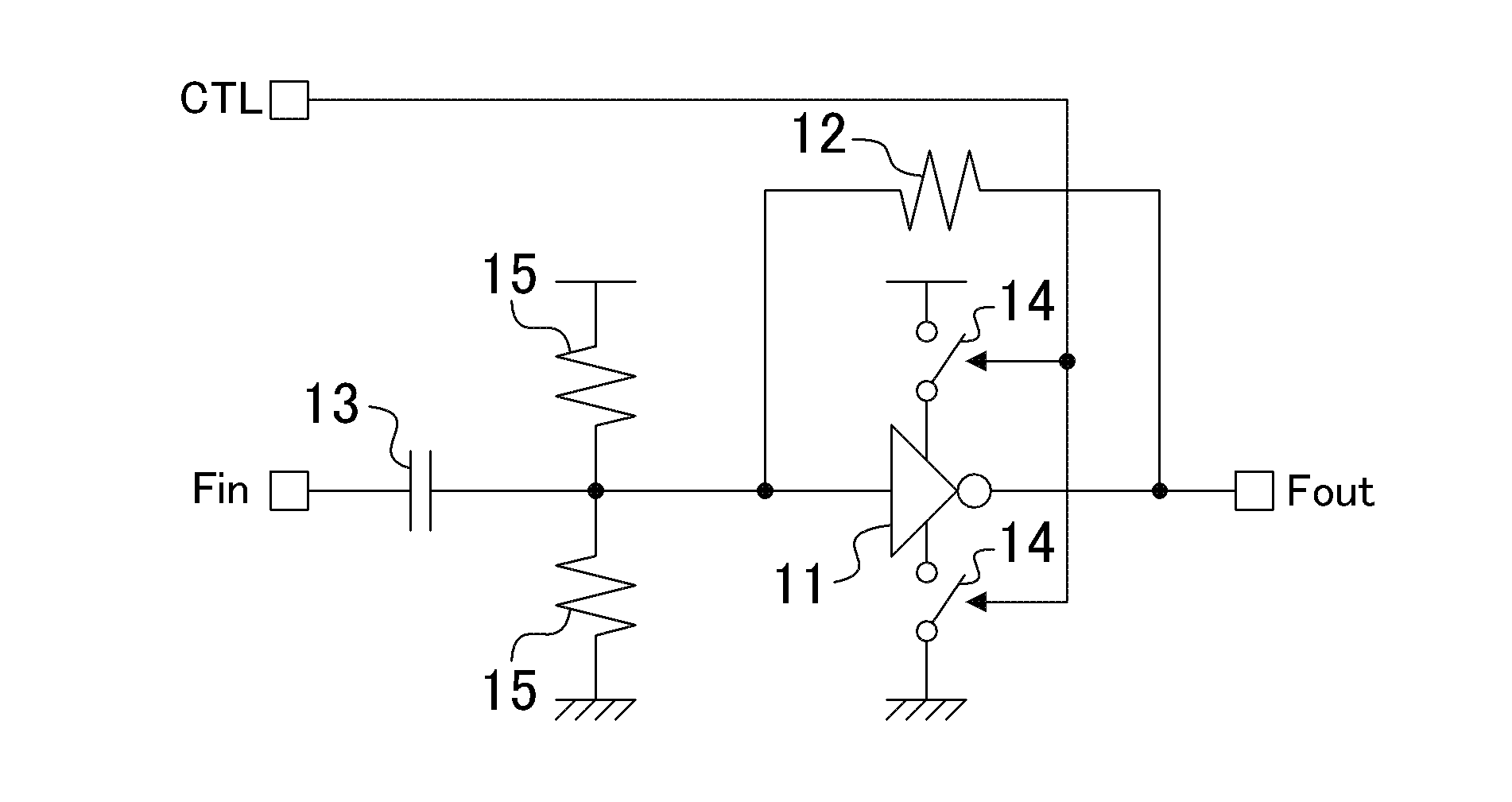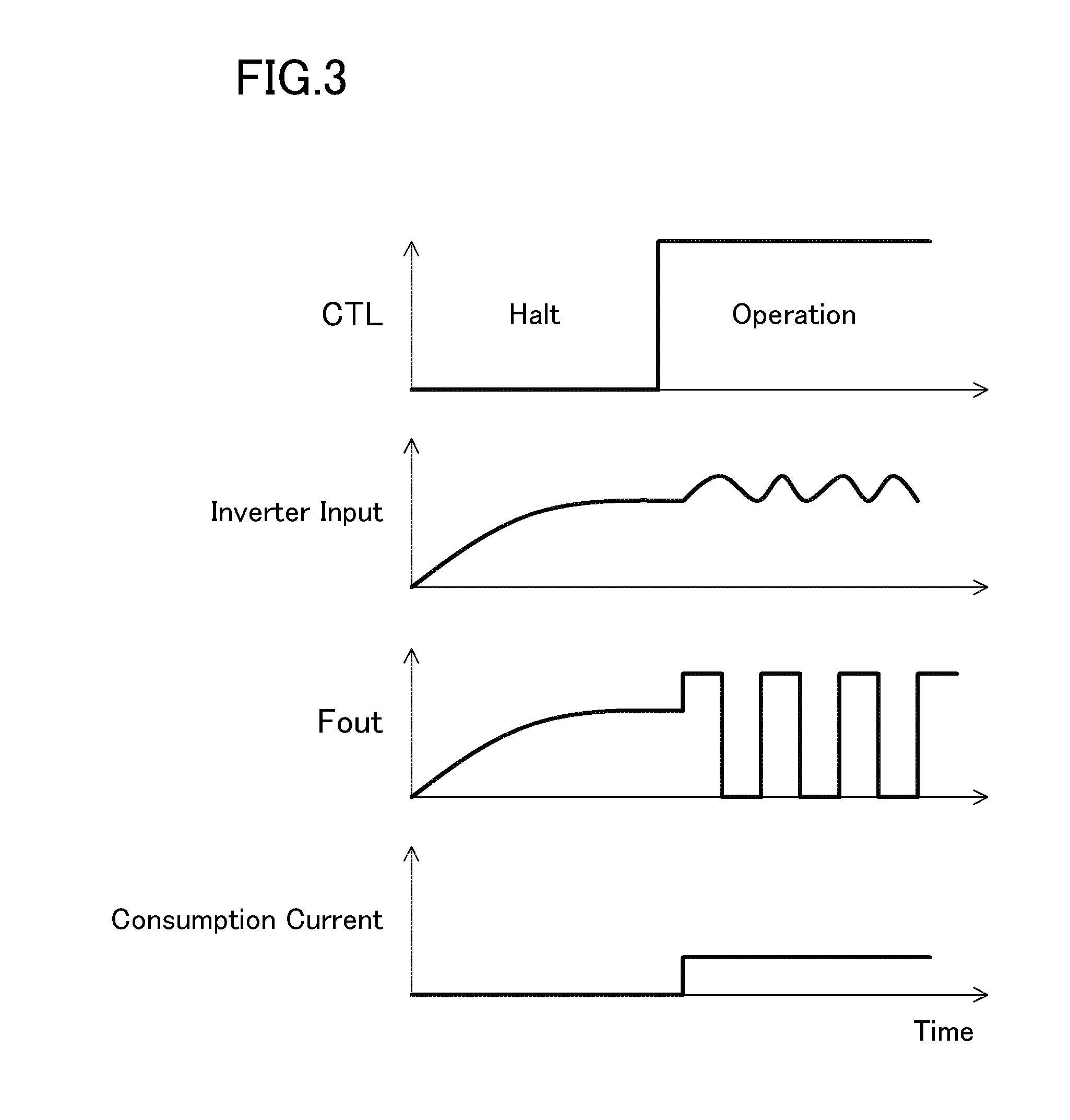Clock signal amplifier circuit
- Summary
- Abstract
- Description
- Claims
- Application Information
AI Technical Summary
Benefits of technology
Problems solved by technology
Method used
Image
Examples
first embodiment
FIG. 1 shows a configuration of a clock signal amplifier circuit of the first embodiment. In the clock signal amplifier circuit of this embodiment, a feedback resistor 12 is connected between the input and output of an inverter 11. The inverter 11 amplifies the AC component of a small-amplitude clock signal Fin input via a coupling capacitor 13 and outputs a clock signal Fout.
Switches 14 are respectively provided on supply paths of the power supply potential and the ground potential to the inverter 11. These switches 14 perform the same open / close operation according to a control signal CTL. For example, the switches 14 are conducting when the control signal CTL is high, and are not conducting when the control signal CTL is low.
As the control signal CTL, a hardware reset signal for the entire system including the clock signal amplifier circuit can be used. In other words, the clock signal amplifier circuit can be controlled so that it is halted when the entire system is being reset ...
second embodiment
FIG. 6 shows a configuration of a clock signal amplifier circuit of the second embodiment. In the clock signal amplifier circuit of this embodiment, a feedback resistor 12 and a switch 14 are connected between the output and one input of a 2-input NAND element 16. The switch 14 performs open / close operation according to a high-active control signal CTL. In other words, the switch 14 is conducting when the control signal CTL is high, and not conducting when the control signal CTL is low. The control signal CTL is also input into the other input of the NAND element 16. The NAND element 16 amplifies the AC component of a small-amplitude clock signal Fin input via a coupling capacitor 13 and outputs a clock signal Fout. The coupling capacitor 13 and two resistors 15 are the same as those described above.
FIG. 7 shows a specific circuit configuration of the clock signal amplifier circuit of FIG. 6, in which the reference characters are omitted. As shown in FIG. 7, the two resistors 15 can...
third embodiment
FIG. 9 shows a configuration of a clock signal amplifier circuit of the third embodiment. The clock signal amplifier circuit of this embodiment includes a resistor circuit 17 connected in parallel with the feedback resistor 12 in addition to the configuration of the clock signal amplifier circuit of the first embodiment. Only points different from the first embodiment will be described hereinafter.
The resistor circuit 17 includes: an integrator circuit 171 that integrates the control signal CTL; and a transistor 172 that is connected in parallel with the feedback resistor 12 and to the gate of which the output of the integrator circuit 171 is applied. In other words, in the resistor circuit 17, the resistance value increases with the CR time constant of the integrator circuit 171 after transition of the control signal CTL from low to high. In this embodiment, the transistor 172 is of p-type because the control signal CTL is assumed to be high-active. When the control signal CTL is l...
PUM
 Login to View More
Login to View More Abstract
Description
Claims
Application Information
 Login to View More
Login to View More - R&D
- Intellectual Property
- Life Sciences
- Materials
- Tech Scout
- Unparalleled Data Quality
- Higher Quality Content
- 60% Fewer Hallucinations
Browse by: Latest US Patents, China's latest patents, Technical Efficacy Thesaurus, Application Domain, Technology Topic, Popular Technical Reports.
© 2025 PatSnap. All rights reserved.Legal|Privacy policy|Modern Slavery Act Transparency Statement|Sitemap|About US| Contact US: help@patsnap.com



